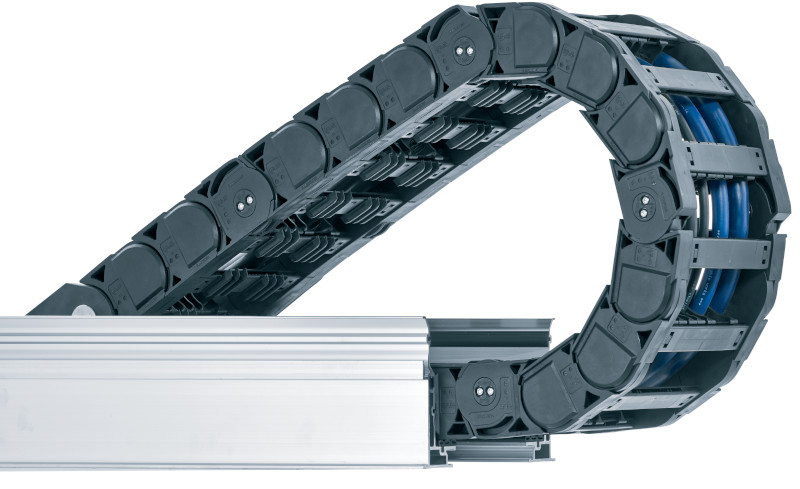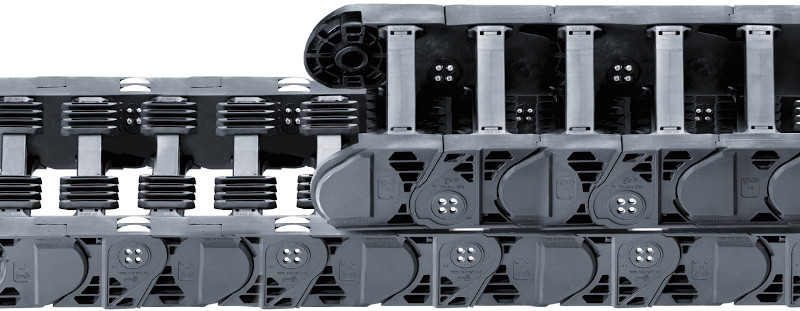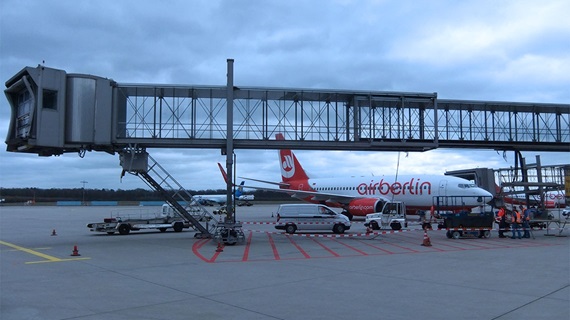This igus® Energy Chain Ran for 18 Years, Despite Harsh Environmental Conditions

For 18 years, a first-generation roller e-chain® has provided reliable service in a harsh environment for one of our customers in pipe production. Newer e-chain® systems will surpass this record.
In 18 years, a child is born, learns to walk, graduates from school and reaches the age of majority after 6,575 days -- that's 157,800 hours. And the proud parents were always by her side. Engineers who observe their new product on the market feel the same way. In our case, the child is the E400R roller e-chain® that we developed over 20 years ago. Would the material cope in harsh environments? Prove itself in the long run? Yes, according to a customer who ran the power and data lines of a machine with the E400R in his pipe factory. The self-supporting roller e-chain® was used there for 18 years.
The Secret of Longevity: Rolling Instead of Sliding
While we were developing the E400R, our goals were to lower the coefficient of friction, minimize wear and tear, and maximize service life. In order to achieve a high level of robustness and wear resistance, our designers decided to modify the construction of conventional energy chains. It was previously common for the upper run to slide on the lower run when the energy chain was folded, but this movement should be a rolling one. To do this, our experts put rollers in the links of the cable carrier, which enormously reduced the coefficient of friction compared to a sliding movement.
It's a design that pays off, especially for long travels in crane systems, for example. The upper run can roll over a length of up to 800 meters on the lower run at a speed of up to six meters per second. In the case of a sliding movement, great forces would be required to overcome the frictional resistance. Thanks to the rollers, the system operator can reduce the drive power for moving the energy chain by about 25%.
2004: Designers Double Life Expectancy
The first generation of roller e-chains® lasted for 18 years in the pipe factory. How old will new systems get then? A few years older. After all, the design engineers have come up with new ideas over the years. In 2004, the experts succeeded in the heavy-duty expansion stage for high additional loads (4040RHD) in doubling the service life compared to the previous series by increasing the bolt and bore connections by 100% and the stop surfaces by more than 30%. The e-chain® is now a standard for STS cranes and ship loaders/unloaders with long travels and high speeds.
In 2008, the inventors reduced the polygon effect in the third generation roller e-chains® (P4) by dividing standard links and roller links equally and relying on a double roller design that reduces noise and vibrations. The roller e-chains® are used for applications with very high speeds (<240 m/min) and in systems in which noise pollution plays a role.
2018: Tribopolymer Plain Bearings and Sensor Technology Triple Life Expectancy

In 2018, the engineers finally donated the latest expansion stage, the P4.1, with maintenance-free tribopolymer plain bearings. This increases the maximum speed to over 300 m/min. In the course of Industry 4.0, it is also possible to equip the bearings with wear sensors. At a defined wear limit, the sensors send a signal to the igus icom communication module so that the user can initiate maintenance in good time. Thanks to these design tricks, the life expectancy of the roller e-chain® has tripled compared to the first generation. The energy chain in pipe production could thus run for 54 years -- more than half a human life.
Check out this blog post to learn more about rolling energy chains and when to use them. You can also visit our webpage for more information or to request your own rolling e-chain®.



